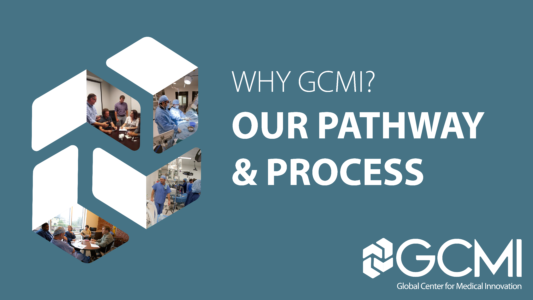
A medtech or life science project’s success is dependent on the careful consideration of several intersecting components: technological, clinical, commercial and legal. GCMI follows a structured, phase-gated process that allows for a disciplined, capital efficient medical device design and product development approach. While the process contains the structure to be compliant with regulatory requirements, it preserves the ability to be flexible through the design process and allows for pivots and changes. Innovators can enter this process at any point depending on what they need and when they need it.
“If we worked with another design and development firm, we wouldn’t have had the flexibility to do what we needed to do in the time frame we set. GCMI is unique in that we were able to choose the services that we needed precisely at the time we needed them. The way GCMI engages with their customers is unlike any other firm.”
– Lou Malice, NFANT Labs
We encourage an early focus on explicit problem definition and identifying a variety of potential solutions. In the second phase, the funnel of medical device design options narrows significantly, converging on a final product that demonstrates the best ability to meet the customer needs, align with regulatory requirements, preserves reimbursement objectives, maneuvers the patent landscape, and is manufacturable.
This phase-gated approach is as follows:
Feasibility
When an innovator has identified an unmet need, taking an efficient approach to identify the viability of potential solutions is key. Feasibility focuses on evaluating critical product elements and prospective intellectual property problems early. At the completion of this phase, an innovator will have data to support the value in launching a full development program for the product including needed medical device design services.
Planning
In our experience, careful planning streamlines medical device design services needs and the product development process including supply chain and manufacturing requirements. Proper planning lowers costs and provides greater market predictability. At the completion of this phase, the project team will have a clear vision for the path to generating the product.
Design & Development
As the design takes shape, the team completes the risk management activities to ensure the final product has all the features, controls, and specifications to fulfill the user’s needs. The device design team will refine concepts from the prototype stage to a final manufacturable device. This process also includes development of the product packaging and labeling, manufacturing processes, materials evaluation, supplier selection, and the small details that support excellent product realization. We strive for an efficient process when moving from concept to prototype to final design. At the completion of this phase, the project team will have the specifications, suppliers, manufacturing processes, labels, packages, testing protocols, and third-party support to manufacture products that enable the project to enter the next phases.
Verification
Thorough engineering evaluations of the product demonstrate whether the output of medical device design efforts have met all design inputs and product requirements. At the completion of this phase, a project team will have statistically significant evidence of the product’s functionality and safety. If required, this data also supports eventual regulatory submissions for marketing approval or clinical use of an investigational device.
Validation
Rigorous system and user testing demonstrate whether the design has sufficiently addressed the clinical need. At the completion of this phase, a project team will have documented evidence as to whether the product meets users’ needs and solves the stated clinical need.
Transfer to Production
In order to scale production to quantities needed for sale, you will need suppliers, raw materials, processes and contracts in place to repeatedly and reliably generate the commercialized product. For many medical products, regulatory approval must also be granted prior to market introduction. At the completion of this phase, the product will be ready for routine production and distribution at a cost that’s appropriate for the value of the product.
If you are a medtech innovator looking for a partner to help with the design and development of your next device, we want to hear from you! Fill out the form below to get in touch.